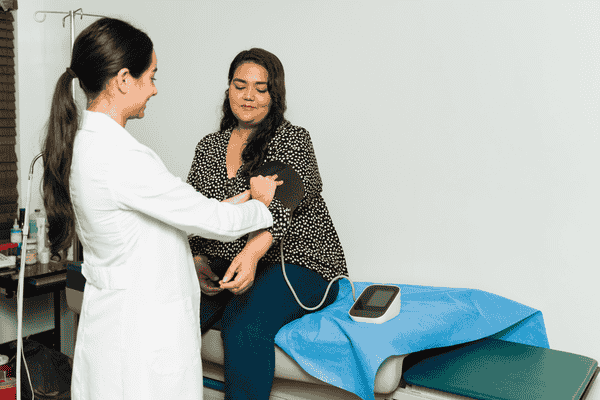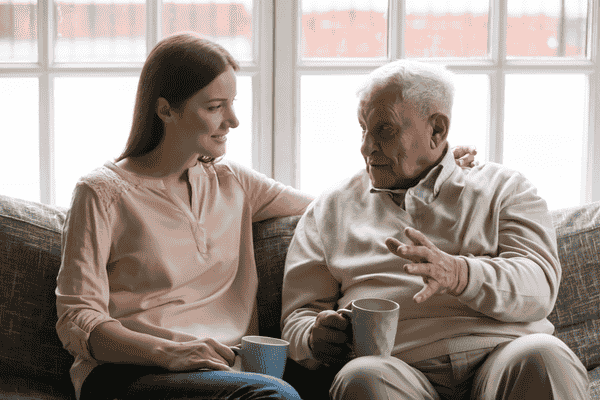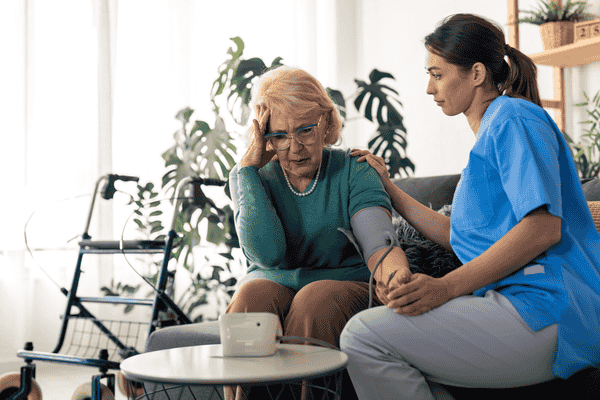On a quiet Sunday morning, Emily sat by the window of her father Robert’s room in the assisted living facility. The soft rays of sunlight filtered through the curtains, casting a gentle glow on the room. As she watched her father, who had just turned 82, peacefully napping, her mind wandered back to the day she realized the importance of monitoring his vital signs. It was the day everything changed.
Robert had always been a robust man, a former marathon runner who never missed his daily walks. But as the years passed, age caught up with him. His heart, once strong and steady, began to falter. It was during a routine check-up that the doctor mentioned the need for regular monitoring of his vital signs. Emily remembered how the doctor had patiently explained the significance of those numbers – blood pressure, heart rate, respiration rate, and body temperature – and how they were the key indicators of her father’s health.
Emily had nodded along, but deep down, she was overwhelmed. How was she supposed to keep track of these numbers? What if she made a mistake? The doctor must have sensed her apprehension because he smiled reassuringly and said, “Don’t worry, Emily. It’s not as complicated as it seems. Let me walk you through it.”
That conversation marked the beginning of Emily’s journey into the world of vital signs monitoring. She soon realized that this knowledge wasn’t just for doctors or nurses – it was something every caregiver needed to master. And so, with determination, she set out to learn the essentials, knowing that her father’s well-being depended on it.
The Importance of Vital Signs
Vital signs are more than just numbers; they are the body’s way of communicating its condition. For caregivers like Emily, understanding these signs is crucial. Vital signs offer valuable insights into a person’s overall health and can help detect early signs of potential problems. They serve as a guide, allowing caregivers to make informed decisions and provide the best possible care.
For Robert, who had a history of high blood pressure and a heart condition, monitoring vital signs became a daily routine. Emily learned that even subtle changes in these signs could indicate something was amiss. For instance, a slight increase in his heart rate could signal that his heart was working harder than usual, possibly due to dehydration or a heart problem. By regularly checking his vital signs, Emily could catch these issues early and seek medical advice before they escalated.
Measuring Body Temperature
The first vital sign Emily learned to monitor was body temperature. She discovered that a person’s body temperature could reveal a lot about their health. A fever, for instance, often indicated an infection or illness, while a low body temperature could suggest hypothermia.
Emily invested in a digital thermometer, which made the process straightforward. She learned to take her father’s temperature at the same time each day, usually in the morning before he had breakfast. This consistency helped her establish a baseline – a normal range for his body temperature. Over time, she became adept at recognizing when his temperature was slightly elevated or lower than usual, allowing her to take action quickly.
Emily also learned that there were different methods to measure body temperature – orally, rectally, axillary (under the arm), and tympanic (in the ear). She preferred the oral method for her father, but she knew that if he ever became unresponsive or had difficulty swallowing, she could use another method.
Monitoring Blood Pressure
Next on Emily’s list was blood pressure – perhaps the most daunting of all vital signs for her. Blood pressure measures the force of blood against the walls of the arteries, and it’s crucial in determining heart health. High blood pressure (hypertension) could strain the heart and lead to serious conditions like stroke or heart attack, while low blood pressure (hypotension) could cause dizziness, fainting, and even shock.
Emily’s father had been diagnosed with hypertension years ago, so monitoring his blood pressure was non-negotiable. She purchased a reliable digital blood pressure monitor, which came with clear instructions. The doctor had advised her to take Robert’s blood pressure twice a day – once in the morning and once in the evening.
At first, Emily was nervous. She worried about placing the cuff correctly or misinterpreting the readings. But with practice, she gained confidence. She learned that Robert’s blood pressure readings fluctuated slightly throughout the day, which was normal. What mattered was that the readings stayed within the target range set by his doctor.
Over time, Emily also became aware of factors that could affect blood pressure readings, such as stress, caffeine, and physical activity. She made sure her father was relaxed and seated comfortably before taking a measurement, and she kept a log of the readings to share with his doctor during check-ups.
Checking Heart Rate
The heart rate, or pulse, was another vital sign Emily learned to monitor. It represented the number of times the heart beats per minute and could vary based on age, fitness level, and overall health. For Robert, who had a heart condition, monitoring his heart rate was particularly important.
Emily learned to check his pulse by gently pressing two fingers on his wrist, just below the thumb. She would count the beats for 30 seconds and then double the number to get his heart rate per minute. At first, this felt awkward, but with time, she became more comfortable with the process.
She discovered that Robert’s pulse was usually steady, but occasionally, it would become irregular or faster than usual. When this happened, she knew it was time to consult his doctor. Emily also learned that other methods could be used to check the pulse, such as using a pulse oximeter, a small device that clips onto the finger and measures both pulse rate and oxygen saturation.
Observing Respiration Rate
The respiration rate – the number of breaths a person takes per minute – was the last vital sign Emily mastered. She realized that while it was often overlooked, it was just as important as the others. The respiration rate could indicate how well the body was getting oxygen and removing carbon dioxide.
To monitor her father’s respiration rate, Emily would observe his chest rise and fall while he was at rest. She would count the number of breaths he took in one minute. A normal respiration rate for adults is typically between 12 and 20 breaths per minute, and she learned that any significant deviation from this range could signal a problem.
Emily also noticed that Robert’s breathing patterns sometimes changed when he was anxious or after physical activity. She learned to differentiate between normal variations and signs of distress, such as rapid, shallow breathing or difficulty catching his breath.
Overcoming Common Challenges
As Emily became more proficient in monitoring her father’s vital signs, she encountered a few challenges along the way. There were days when Robert was uncooperative or simply too tired, and she had to find creative ways to encourage him. She learned the importance of patience and persistence, knowing that these checks were essential for his well-being.
Another challenge was dealing with her own anxiety. Emily often worried about interpreting the readings correctly and feared missing a critical sign. But she found solace in the fact that she wasn’t alone – she could always reach out to healthcare professionals for guidance.
Emily also realized the importance of self-care. Caring for an elderly parent was emotionally and physically demanding, and she needed to ensure she was in the right frame of mind to provide the best care. She made time for herself, whether it was through a short walk, reading a book, or simply talking to friends. This helped her stay focused and resilient.
Best Practices for Caregivers
Through her journey, Emily learned several best practices that made vital signs monitoring more manageable. She developed a routine, setting specific times each day to check her father’s vital signs. This consistency not only helped her establish baselines but also made the process less stressful for both her and Robert.
She also kept detailed records of all the readings, noting any changes or patterns over time. This log became an invaluable tool during doctor visits, providing a clear picture of her father’s health.
Finally, Emily understood the importance of communication. She regularly updated her father’s healthcare team on his vital signs and any concerns she had. This collaboration ensured that Robert received the best possible care, with everyone working together to monitor his health.
Conclusion
As Emily sat by the window, watching her father wake from his nap, she felt a deep sense of accomplishment. What had once seemed like an overwhelming task had become a routine part of her caregiving responsibilities. She knew that by mastering vital signs monitoring, she was playing a crucial role in safeguarding her father’s health.
Emily’s journey is a testament to the power of knowledge and the importance of caregivers in the lives of their loved ones. By understanding and monitoring vital signs, caregivers can make a significant difference, ensuring that those they care for receive the attention and care they need to live healthy, fulfilling lives.













